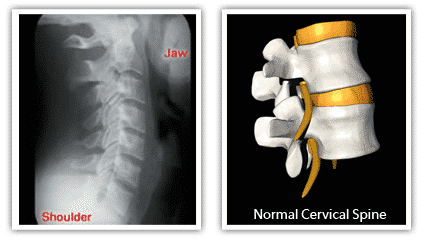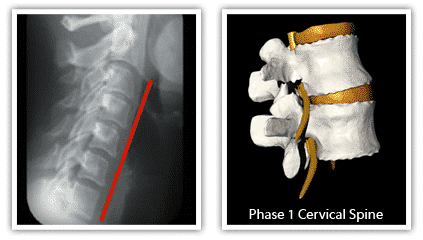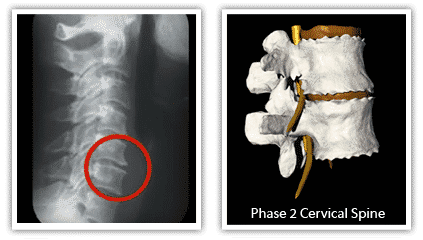PHASES OF DEGENERATION
Proper spinal alignment is essential for healthy and pain-free living. When there is a trauma to a joint, one of the ways your body responds is the stabilization of the area by formation of new bone. With time, calcium deposits build up, eventually as abnormal bone growth. This arthritic ‘splinting’ of bones is nature’s attempt to stabilize the injured joint. If left untreated, subluxation takes the form of ongoing degeneration known as ‘subluxation degeneration’ and can lead to chronic health related problems. To learn more about the phases of degeneration, continue reading.
As these X-Rays below show, there is a progressive degeneration that can be halted or slowed with the proper chiropractic care.
Subluxation Degeneration is how the body responds to improperly functioning spinal joints. With early detection, appropriate care has been shown to slow, stop and even reverses the early stages of the process. Ask us to design a program of preventative care for you and your family.
Normal Cervical Spine: Normal curves and proper disc spacing allow for a normal functioning spine and nervous system. Regular check ups are recommended for early detection and prevention of spinal decay. Regardless of age, normal does not change.
Phase 1: Loss of normal curve and nervous system dysfunction results from uncorrected spinal trauma. Because the body is so adaptive, this early phase can exist without the warning of pain or other symptoms. At this point, returning to normal is expected with appropriate care. However, if left uncorrected, the degeneration continues.
Phase 2: Bone spurs, disc narrowing and calcium deposits are often present in this advanced phase. Abnormal bone growths that distort the shape and function of the spine can be seen on X-Ray. From lack of normal joint movement, soft tissue, discs, and ligaments continue to degenerate. Like the mineral deposits in a cave if given enough time, adjacent spinal bones can fuse together. Depending on the amount of nerve system interference, pain and other symptoms may or may not be present.
Phase 3: After years of neglect, the improperly functioning spinal joints often fuse together. Joint immobilization, bone fusion, nerve atrophy, and scar tissue develop. This damage is irreversible. Slowing or stopping the process may be expected with appropriate care.



